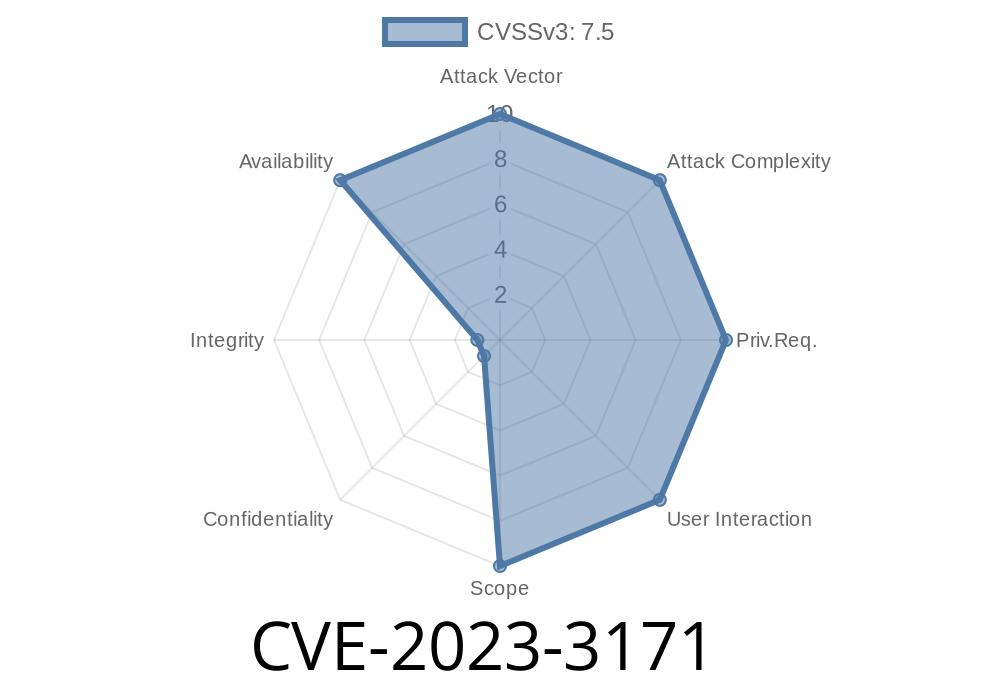A recent vulnerability, identified as CVE-2023-3171, has been discovered in the Enterprise Application Platform (EAP) version 7. The flaw exists during the deserialization of certain classes and allows for the instantiation of HashMap and HashTable with no resource consumption checks. The major concern is that this issue could enable attackers to submit malicious requests using these classes, eventually exhausting the heap and causing a Denial of Service (DoS) attack.
This post will outline the details of the CVE-2023-3171 vulnerability, provide code snippets to demonstrate the issue, and offer links to original references.
Vulnerability Description
EAP is a middleware solution that provides various functionality for deploying and managing applications in different environments. During the deserialization of specific classes in EAP-7, no checks are performed to ensure the proper consumption of resources. As a result, HashMap and HashTable can be instantiated without any validation of resource constraints.
This vulnerability exists due to the absence of resource boundaries and limits when creating instances of HashMap and HashTable. Consequently, an attacker can exploit this flaw to submit malicious requests that consume an excessive amount of heap memory, leading to a DoS attack and making the application unresponsive or unavailable.
Code Snippet
Here's a code snippet demonstrating how the vulnerability could be exploited. In this example, an instance of HashTable is created with an inappropriately large initial capacity:
import java.util.Hashtable;
public class CVE_2023_3171_Exploit {
public static void main(String[] args) {
int maliciousCapacity = 1_000_000_000; // Set an unreasonably large initial capacity
Hashtable maliciousHashtable = new Hashtable<>(maliciousCapacity);
}
}
By creating an instance of HashTable with such a large capacity, the application would consume a massive amount of heap memory, potentially leading to a DoS attack.
Exploit Details
To exploit the vulnerability, an attacker must send a crafted request containing a serialized payload, which triggers the EAP-7 deserialization flaw. Once the attacker submits the payload, the EAP-7 deserialization process creates instances of HashMap or HashTable without proper resource consumption checks.
The payload must be tailored to bypass any security checks, which may vary depending on the specific application implementation and configuration.
For more information on this vulnerability, refer to the following original references
1. CVE-2023-3171 in the National Vulnerability Database
2. EAP-7 Deserialization Vulnerability
Conclusion
The CVE-2023-3171 vulnerability is a serious issue that could lead to DoS attacks on EAP-7 applications. It is essential for developers and system administrators to apply necessary patches and updates as soon as they become available to mitigate the risk of exploitation. Additional security hardening measures, such as implementing strict security controls during the deserialization process, should also be considered to protect against similar vulnerabilities in the future.
Timeline
Published on: 12/27/2023 16:15:13 UTC
Last modified on: 01/04/2024 17:07:40 UTC
